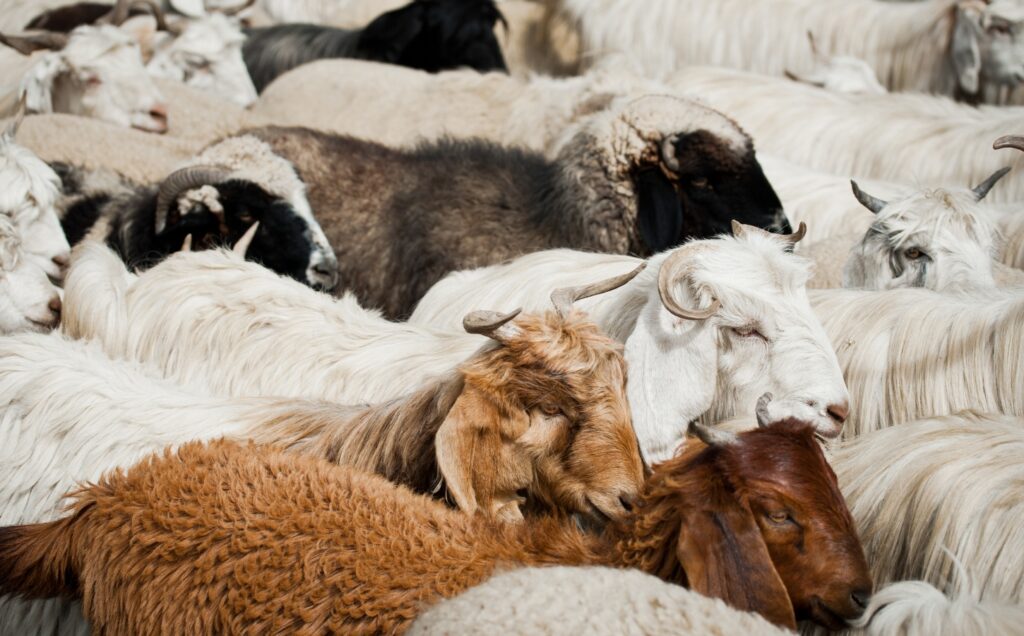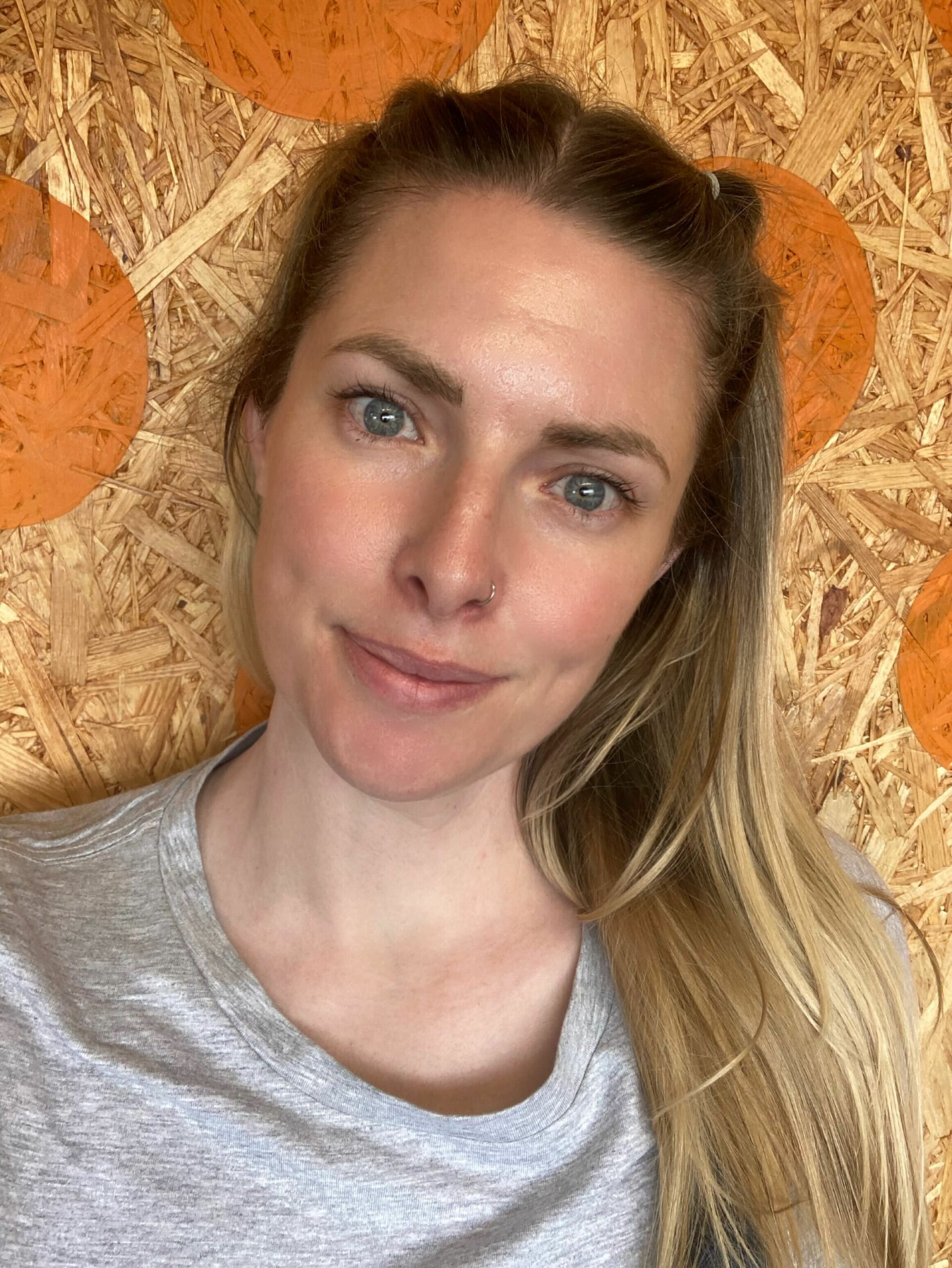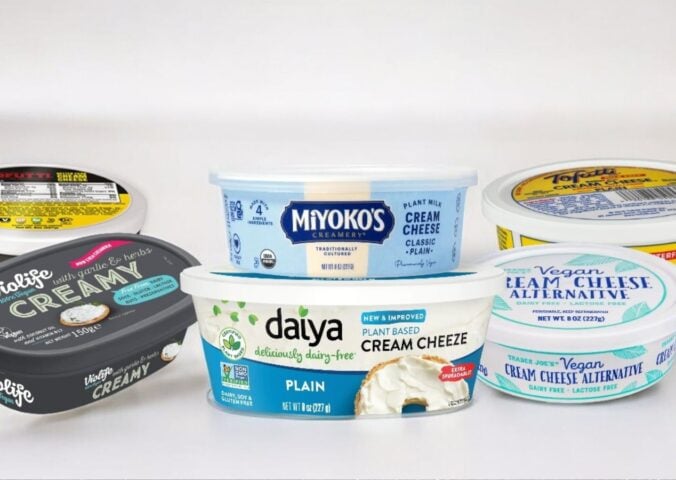Cashmere, an extremely soft and expensive wool alternative, was once a poster child for luxurious fashion. But as it falls out of favor with luxury designers such as Stella McCartney and high street favorites, including ASOS, could its use finally be coming to an end?
Here are just a few of the reasons to give up cashmere, from species decline to serious animal welfare concerns. Plus, why the future of fabric is cruelty-free.
Cashmere’s impact on the planet
For the most part, cashmere wool comes from Mongolian goats who live in the Gobi Desert—hence why it is so expensive.
It comes from the underbelly part of the goat’s body, where the hair is fine and delicate. It is obtained by extensive combing of the heavier, often shaggy top coats of the animals. Typically, four goats are needed to make just one average-sized sweater.
Because of the way it is produced, cashmere has been linked to falling numbers of endangered animals.
As the nonprofit Collective Fashion Justice highlights, cashmere goat grazing leads to significant natural habitat loss. This is referenced in a report entitled Globalization of the cashmere market and the decline of large mammals in central Asia, which was released back in 2013.
Essentially, the goats harm the environment with their eating habits: the animals eat 10 percent of their body weight daily in the form of plants that they rip out of the ground. Roots and all.
With an estimated population of around 700 million, cashmere goats are creating a significant biodiversity deficit. In addition to their consumption, their tough hooves impact the earth, making it difficult for new plants to grow.
Mongolia’s temperature has risen by an average of four degrees Fahrenheit as a result of global warming. This, combined with grazing goats, is considered to be responsible for the degradation of 65 percent of its grasslands.
Plus, research suggests that increased goat farming across China and Mongolia has contributed to dwindling numbers of snow leopards, wild yaks, and saiga antelopes, amongst others, across central Asia.
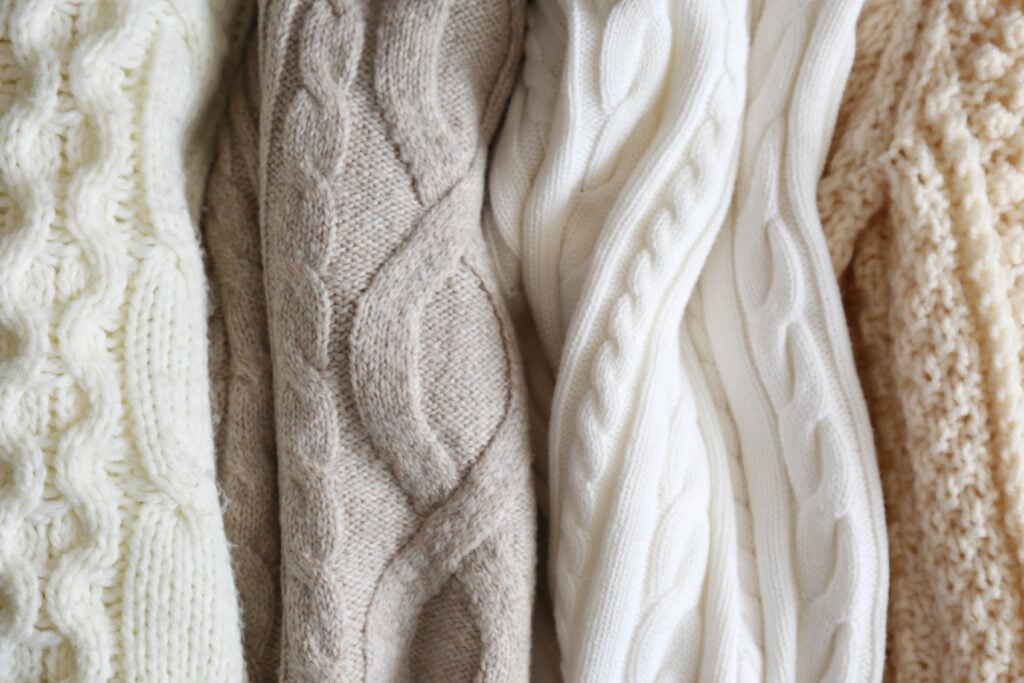
Researchers found that persistent ecosystem damage, caused by growing numbers of goat herds, reduced the likelihood of native species’ survival. A lack of ground cover for hunting predators and depletion of preferred food sources are cited.
Is cashmere cruel?
Cashmere is not only harmful to wild animal populations, but also to the goats themselves.
Cashmere is a luxury product, commanding a high price tag due to its softness. Used in high-end fashion, it is produced using the fleeces of Changthangi or Pashmina goats. Commonly depicted as a gentle, even pleasant, process, hair fiber retrieval is completed through extensive combing of individual animals.
In reality, animals are “combed” using sharp metal-toothed tools, which rip through their often matted topcoat to reach the ultrafine fibers on their underbellies. Goats have to be forcibly held or tied down during the process. And previous animal welfare investigations, including one conducted by PETA, have produced footage of animals screaming in agony during the procedure.
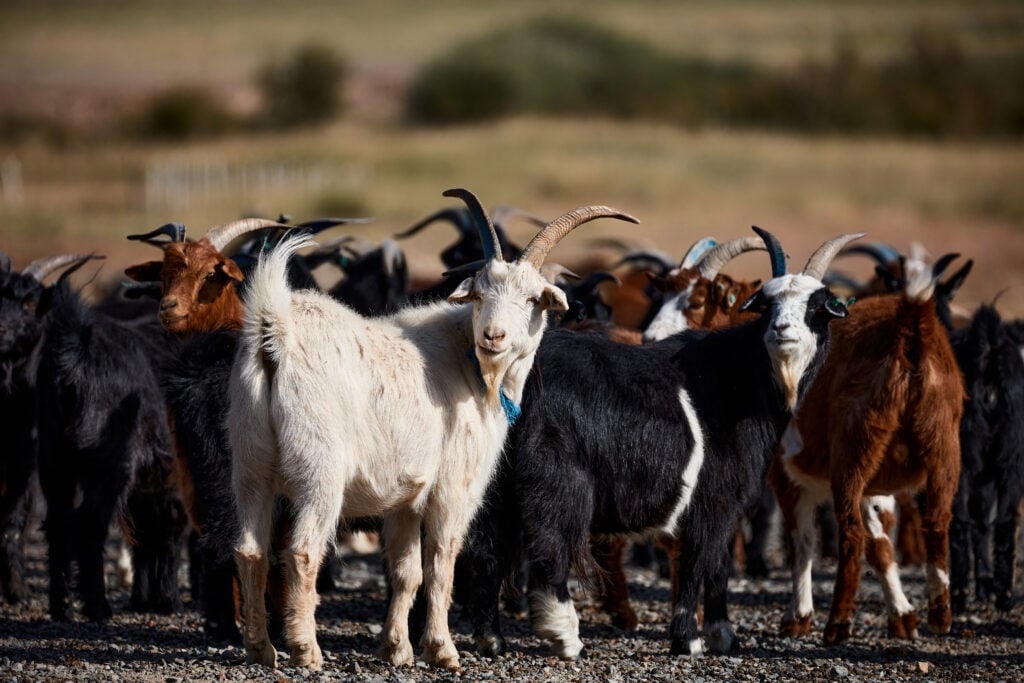
Goats are subjected to multiple combings until they no longer produce ultra-soft hair. At this point, they are deemed unprofitable and are slaughtered.
When left to live a natural life, goats often reach around 12 years old. Those reared for the cashmere industry rarely see past five years, with males commonly killed much sooner. This is due to females often having softer hair, though the quality and color are important too. Animals who do not produce the right hair are slaughtered regardless of sex.
Neither China nor Mongolia has any animal welfare laws in place to protect these goats. Though the latter did introduce its Animal Health Law in 2017, which looked to help farmers control disease in their herds. As a result, animal deaths can be brutal and cruel with many reportedly being hit in the head with a hammer and left to bleed out.
Cruelty-free alternatives to cashmere
The global cashmere market is expected to reach $4.6 billion by 2032. Increasing demand is attributed to millennial interest in luxury goods, though popular high-street brands have moved away from its use in recent years. H&M and ASOS both ditched the material in 2019.
One factor that could stunt sector growth is the rising number of Gen Z and Millennial vegans.
This means that an interest in animal welfare is likely to grow and consumers could be looking to substitute cruel materials, including leather, wool, and cashmere, with more humane alternatives.
A number of eco-friendly alternatives to these materials already exist, including Lyocell, bamboo, and hemp. Plus, vegan leather is a fast-growing sector, but plant-based cashmere remains more niche, particularly compositions that are plastic-free.
However, choosing such options would reduce industry cruelty and may even prevent some of Asia’s largest mammals from becoming extinct.
The saiga antelope is officially classified as critically endangered, with an estimated 50,000 left in the world. Snow leopards are also considered to be one of the 10 most endangered animals globally, according to Animals Around the Globe.
